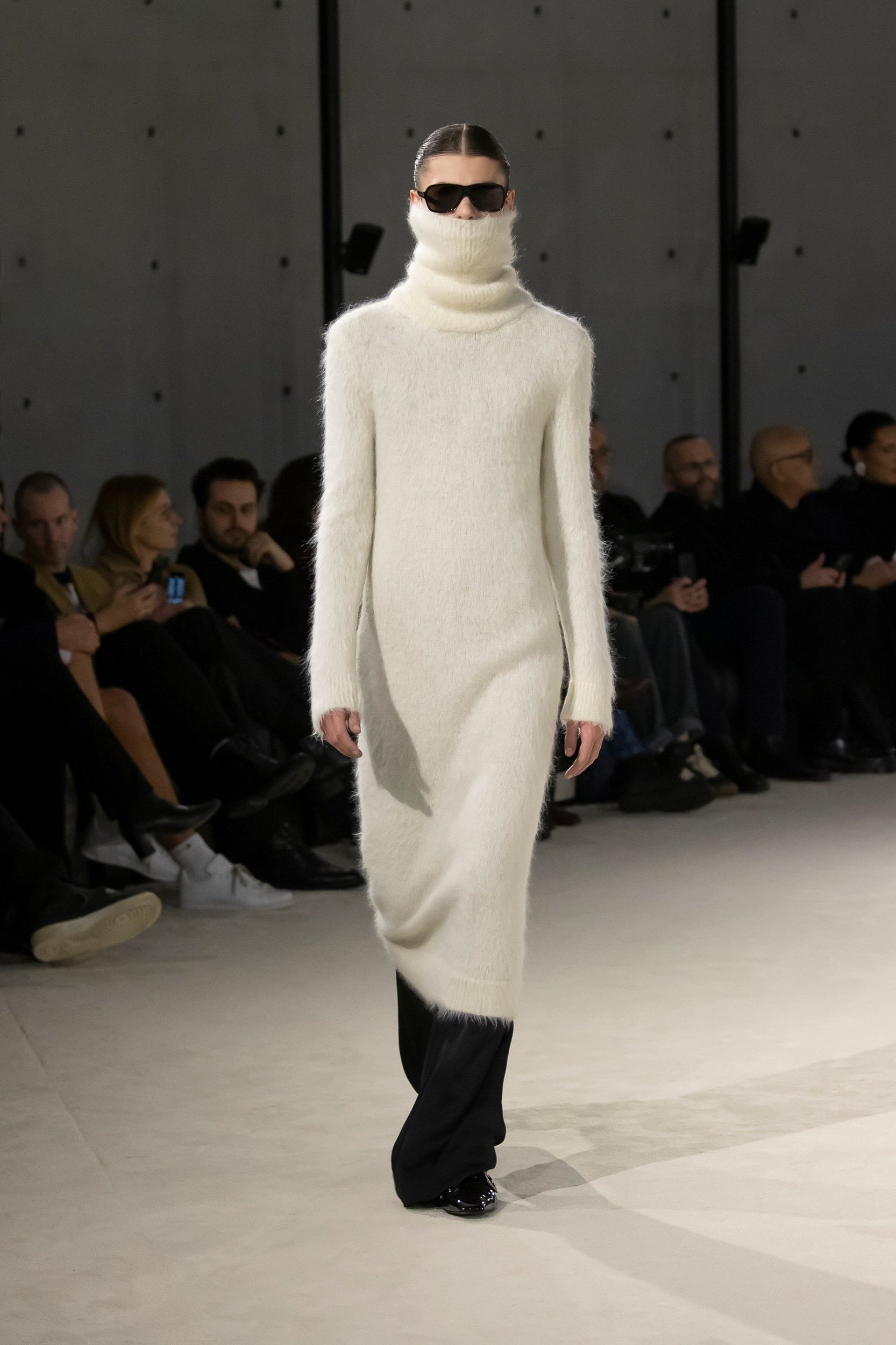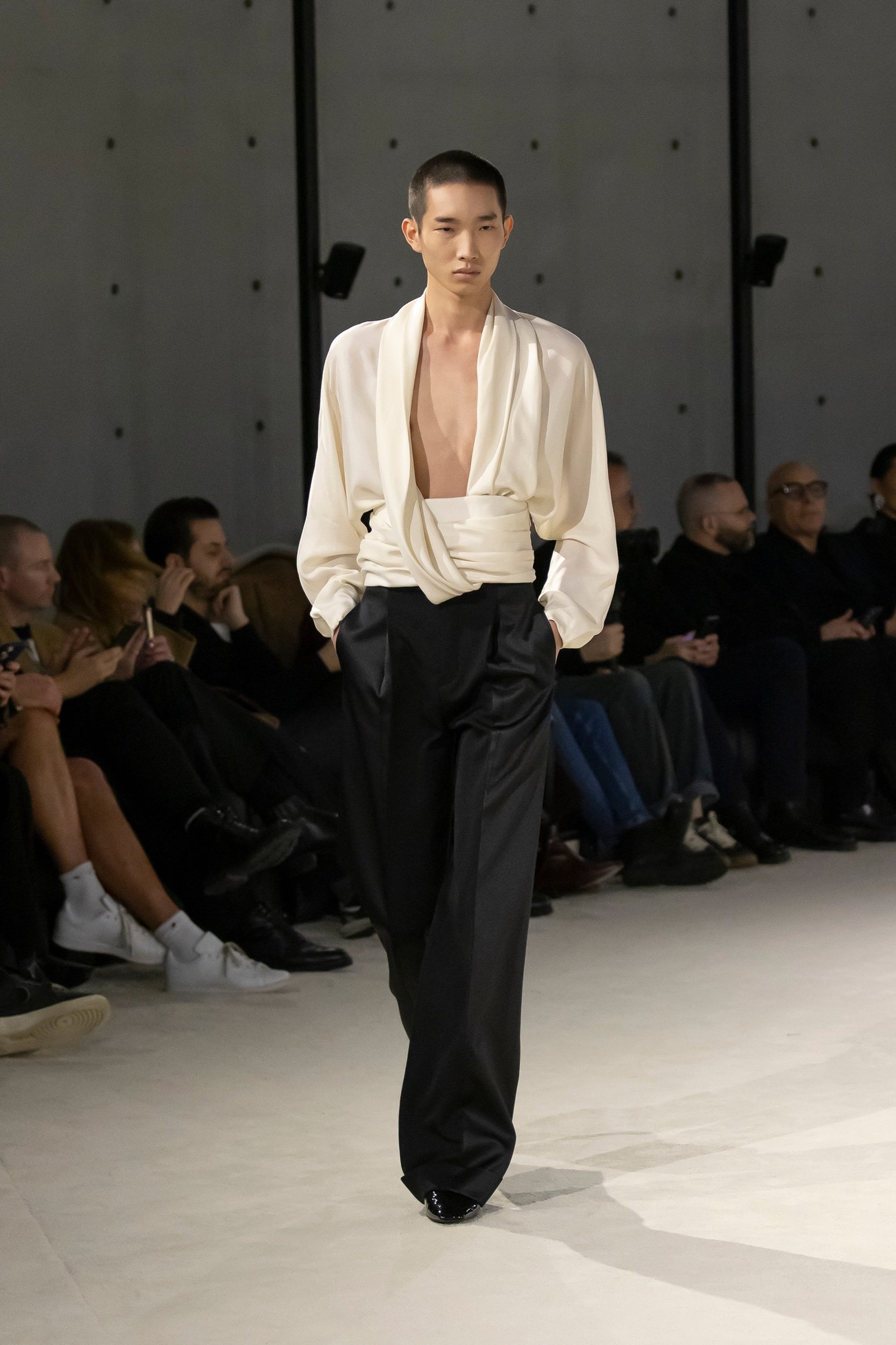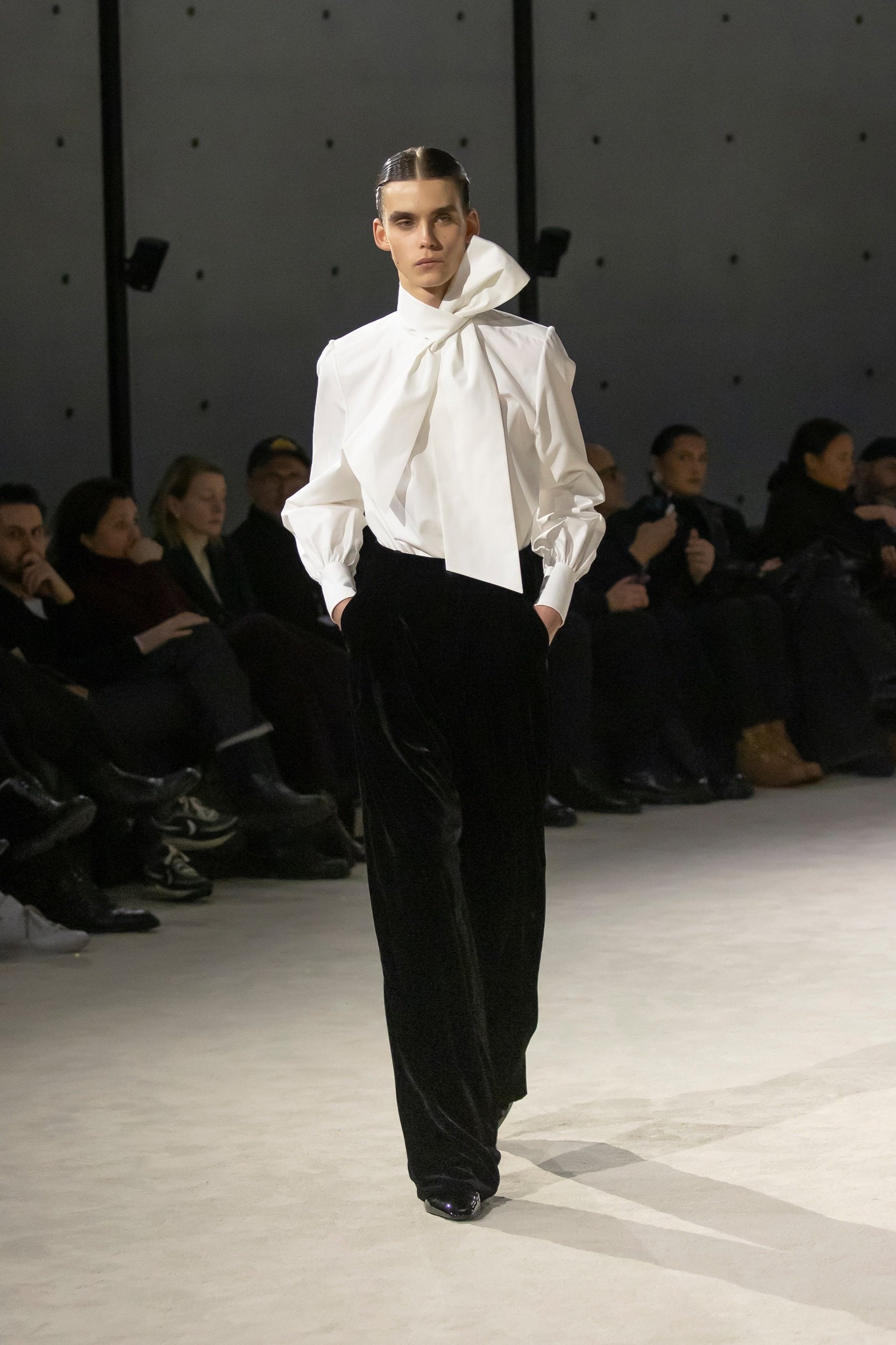The Trailblazers of Gender at Men’s Fashion Week
Men’s Fashion week is almost over, with menswear collections shown in Milan and Paris. As these events come to a close and Haute Couture week approaches, we would like to examine the role that gender played at men’s fashion week this year.
Brands had extremely different approaches to what constitutes a menswear line. Some brands went with a more traditional interpretation, showing collections that comprised mostly of some variation of suits, trousers, shirts, and coats. These brands included Prada, Georgio Armani, Zegna, Givenchy, and Louis Vuitton. They all followed a more traditional format, choosing to express their creativity through classic men’s pieces and silhouettes.
Courtesy of Vogue
Some brands went completely in the opposite direction, choosing to reject tradition with the intention of making a statement. JW Anderson, for example, has from its outset rejected traditional men’s clothing. This year was no exception, and in fact the brand brought back updated versions of its most controversial pieces from its first fashion week ten years ago. Male models walked down the runway dressed in ruffled shorts and minidresses, in addition to a litany of other gender-defying pieces. The message is simply: men can wear skirts, shared wardrobes can exist.
Courtesy of Vogue
Perhaps the most electrifyingly avant garde collections, however, were those that ignored gender completely. Models in shows by brands like Kenzo, Offine Generale, Ami, and Lemaire were not limited to just men. Rather, these brands used a cast diverse in gender. They demonstrated a series of collections that took a step past ignoring gender stereotypes or expectations; they paid no attention to gender at all. Instead, they created a collection that could be consumed or enjoyed by anyone.
Courtesy of Vogue
Dior and Saint Laurent, while using a male (or male presenting) cast of models, still presented collections that embraced traditionally female cuts, silhouettes, and details equally to traditionally male styles, which more or less communicated the same message.



Of course, this is more true in some cases than others. Ami, for example, only put skirts in dresses on female models, which calls into question slightly the notion that they were attempting something groundbreaking.
It is true, however, that the tide is flowing in the direction of genderless clothing. Judith Butler famously argues in her seminal text Gender Trouble that gender is nothing more than a behavior we learn as children: how to act like a girl, or how to act like a boy. That behavior, and the restrictions that it places upon us, includes how we dress. Men’s clothes. Women’s clothes.
Courtesy of Vogue
That is why the collections that are simply making great clothing, focusing on the art rather than on a perceived audience, are actually the most subversive. Instead of vehemently rejecting the gender binary, they ignore it completely, therefore freeing themselves of any rules.
Vaccarello of Saint Laurent said of his work that “I really want them to be almost one person. So women could be men, and the men could be women. No difference. I want more and more to put them at the same level. No distinction”. Phrased like this, it seems like an incredibly simple concept. And yet, it’s not- at least not right now.
As notions of gender and the world of high fashion evolve parallel to each other, it will be interesting to observe how these concepts continue to inform one another.





